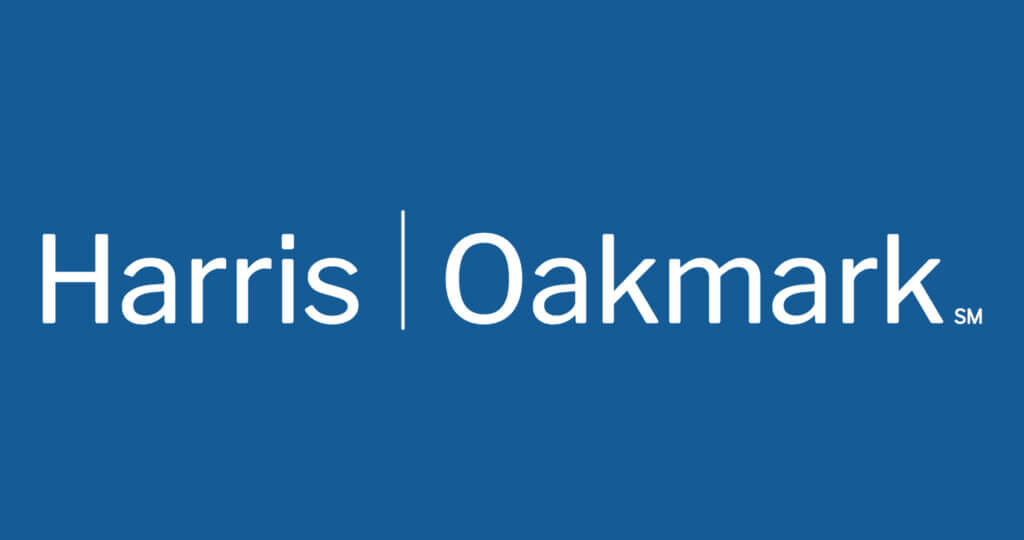Oakmark Equity and Income Fund - Investor Class
Average Annual Total Returns 06/30/16
Since Inception 11/01/95 9.92%
10-year 6.28%
5-year 5.68%
1-year -5.18%
3-month -0.42%
Gross Expense Ratio as of 09/30/15 was 0.75%
Past performance is no guarantee of future results. The performance data quoted represents past performance. Current performance may be lower or higher than the performance data quoted. The investment return and principal value vary so that an investor’s shares when redeemed may be worth more or less than the original cost. To obtain the most recent month-end performance data, view it here.
A High Price for Safety
The second quarter of 2016 got off to a strong start, with the S&P 500’s cumulative return for the year peaking around 5% in early June. Of course, that was before Britain’s vote to exit the European Union, or the now famous Brexit, which caused the index to fall in excess of 5% over a two-day period. The decline was especially hard on the equities in the Fund, many of which are sensitive to interest rates and the general economy. These groups of stocks have been underperforming for the past year and seem to trade down on any news that causes uncertainty about the global economy. As our International Chief Investment Officer David Herro highlighted in his Brexit piece on the Oakmark website, investors have been obsessed with macroeconomic themes since the financial crisis of 2008-2009 and have used each subsequent macro event as the basis for portfolio action. These actions have typically involved buying investments that are considered “safe” and selling investments that are considered “risky,” regardless of price. As a result, 10-year treasury yields have fallen by 75 basis points this year to 1.5%; “low risk” equities such as utilities, consumer staples and REITs have soared; and cyclical and financial stocks have continued to trade down.
The Fund’s stock and bond exposures continue to be very different than what the market currently favors. Within equities, we continue to find more value in financials and other economically sensitive businesses. As we explained last quarter, we believe that these more cyclical businesses are appropriate for a conservative balanced fund given their large discounts to our estimate of intrinsic value, which provide a healthy margin of safety. Although investors remain fixated on current news headlines, we still believe that over the long term, the global economy will continue to grow at a moderate pace. The duration of our bond portfolio remains relatively short as a means designed to protect against rising interest rates.
We are often asked how we avoid “value traps.” While this is easier said than done—since traps are only apparent with the benefit of hindsight—one thing that we do is closely track how our estimate of value is progressing versus our original expectations. We have found that when a stock’s intrinsic value growth falls substantially short of our initial targets, it tends to underperform the market in subsequent periods. The opposite is true of stocks for which we are continually raising our estimate of value. Lately, this correlation has broken down. Our estimates of value for many of the Fund’s holdings (outside of energy) have generally tracked our expectations, but the stocks have underperformed. Conversely, many of the supposedly “less risky” stocks have performed strongly despite our estimate of value declining or remaining stable. This could be because investors are now using a very low discount rate (the interest rate used to determine the present value of future cash flows) for “safe investments,” while using an ever higher discount rate for “risky investments.” This trend has hurt the Fund’s short-term performance, but we expect the discount rates to narrow as concerns about the current macroeconomic environment subside. It is worth noting that even if the gap between discount rates does not narrow, the higher discount rate placed on more economically sensitive businesses should lead to outperformance over time. We will continue to monitor changes in our estimates of value closely, but we are comforted that, for the most part, business fundamentals are evolving as we expected and that valuations are compelling.
Quarter Review
The Equity and Income Fund remained flat for the quarter, trailing the Lipper Fund Index’s return of 2%, the Fund’s performance benchmark. Year-to-date results are similar, with the Fund’s performance remaining unchanged, compared to the Lipper Index at 3%. Since the Fund’s inception in 1995, the annualized compound rate of return is 10%, which bested the benchmark at 7%. In order, Nestlé, Dover, United Healthcare Group, FNF Group and Union Pacific led the contributors’ list for the second quarter, while BorgWarner, General Motors, Foot Locker, CVS Health and TE Connectivity were the biggest detractors. Top performers year-to-date were Oracle, UnitedHealth Group, Philip Morris International, Dover and Glencore, while Bank of America, BorgWarner, General Motors, TD Ameritrade and Foot Locker were the worst. The winners’ results were largely driven by company-specific fundamentals, while the common theme amongst the losers was economic sensitivity as explained above.
Transaction Activity
After a flurry of activity in the previous quarter, we added no new names and eliminated only three during the second quarter. On the favorable side, industrial stocks General Electric and Parker Hannifin performed well in our view, and even though we continue to see upside in these stocks, we sold those positions and used the proceeds to purchase other stocks that we believe have even greater appreciation potential. As for Blount, the third removal, we initially started buying the stock before the downturn in the agricultural cycle. As that downturn accelerated, the share price declined more than our estimate of intrinsic value, and we took advantage of this by both tax trading and adding to our holdings. Ultimately, the stock was acquired at a large premium to where it was before the deal, but below our average cost and estimate of intrinsic value.
As always, we thank our shareholders for entrusting their assets to the Fund and welcome your questions and comments.
The holdings mentioned above comprise the following percentages of the Oakmark Equity and Income Fund’s total net assets as of 06/30/16: Nestle ADR 3.3%, Dover Corp. 2.7%, UnitedHealth Group, Inc. 2.1%, FNF Group 1.8%, Union Pacific Corp. 1.4%, BorgWarner, Inc. 1.7%, General Motors Co. 3.9%, Foot Locker, Inc. 2.2%, CVS Health Corp. 2.9%, TE Connectivity, Ltd. 2.7%, Oracle Corp. 4.0%, Philip Morris International, Inc. 2.3%, Glencore PLC 0.9%, Bank of America Corp. 3.5%, TD Ameritrade Holding Corp. 1.7%, Parker-Hannifin Corp. 0%, General Electric Co. 0%, and Blount International, Inc. 0%. Portfolio holdings are subject to change without notice and are not intended as recommendations of individual stocks.
Click here to access the full list of holdings for The Oakmark Equity and Income Fund as of the most recent quarter-end.
The S&P 500 Total Return Index is a market capitalization-weighted index of 500 large-capitalization stocks commonly used to represent the U.S. equity market. All returns reflect reinvested dividends and capital gains distributions. This index is unmanaged and investors cannot invest directly in this index.
The Lipper Balanced Funds Index measures the performance of the 30 largest U.S. balanced funds tracked by Lipper. This index is unmanaged and investors cannot invest directly in this index.
The Fund invests in medium- and lower-quality debt securities that have higher yield potential but present greater investment and credit risk than higher-quality securities, which may result in greater share price volatility. An economic downturn could severely disrupt the market in medium or lower grade debt securities and adversely affect the value of outstanding bonds and the ability of the issuers to repay principal and interest.
The Oakmark Equity and Income Fund’s portfolio tends to be invested in a relatively small number of stocks. As a result, the appreciation or depreciation of any one security held by the Fund will have a greater impact on the Fund’s net asset value than it would if the Fund invested in a larger number of securities. Although that strategy has the potential to generate attractive returns over time, it also increases the Fund’s volatility.
The discussion of the Fund’s investments and investment strategy (including current investment themes, the portfolio managers’ research and investment process, and portfolio characteristics) represents the Fund’s investments and the views of the portfolio managers and Harris Associates L.P., the Fund’s investment adviser, at the time of this letter, and are subject to change without notice.
All information provided is as of 06/30/2016 unless otherwise specified.







